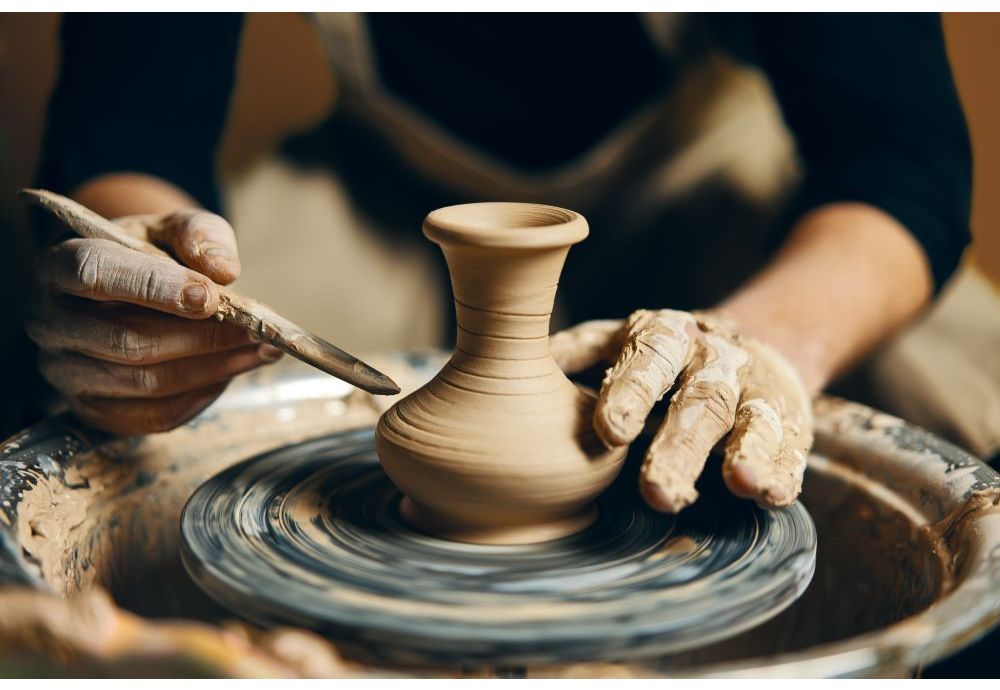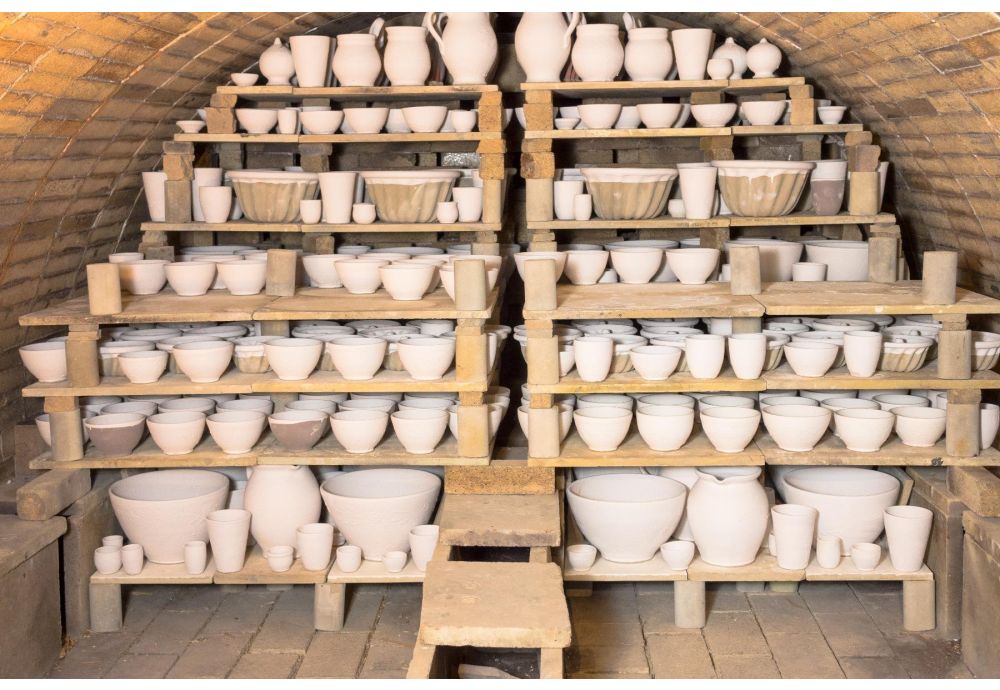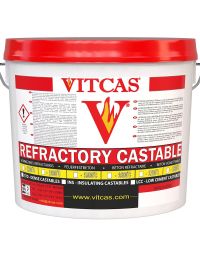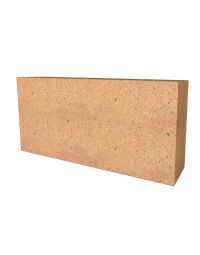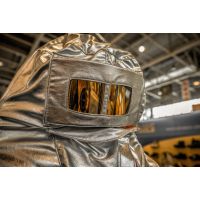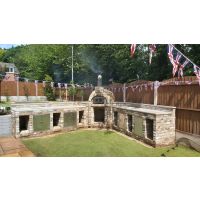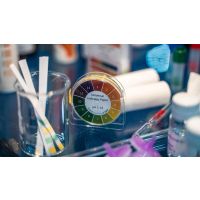Pottery, the exquisite symphony of human hands, earth, and fire, is an age-old craft tracing its roots back to the dawn of civilisation. Over thousands of years, potters have refined the techniques and materials used in this art form, giving birth to a range of styles and types of pottery.
Earthenware and bone china have established themselves as prominent types of pottery. In this comprehensive exploration, we will focus on the captivating process of earthenware manufacturing, from the initial clay selection to the final firing.
Key Ingredients in Earthenware Production
Earthenware pottery, noted for its richness and durability, begins its life as four fundamental components: China clay, ball clay, flint, and stone. Each ingredient plays a distinct role in the finished product. China clay, or kaolin, lends the characteristic whiteness to the pottery. Ball clay imbues plasticity, allowing the potter to shape the clay with dexterity. Flint or silica gives strength, enhancing the pottery's durability, while stone functions as a flux, aiding in melting during firing.
Creation of the Body Slip
The journey from raw materials to finished pottery involves a multitude of precise steps. The first of these is the formation of the body slip. Materials, delivered as a ground slop (like flint and stone) or mixed with water in blungers (as with ball and china clays), are combined in exact proportions. This mixture is then sieved and passed over magnets to remove lumps and any magnetic material, resulting in a fine, homogenous slip. The body slip is then stored in large arks, ensuring uniformity in the batch, an important step in producing quality earthenware.
The Transformation of Slip into Plastic Clay
In the next stage, the body slip undergoes a dewatering process, resulting in cakes of plastic clay with a moisture content of about 25 to 30%. Part of this clay is further processed with the addition of chemicals to form casting slip, ideal for moulding complex shapes like teapots and jugs.
The remaining clay is put through a de-airing pug, a machine that removes air pockets to produce a plastic, air-free, and homogenous clay. This clay serves as the raw material for the crafting of various pottery items, such as flatware (plates, saucers) through a process called "jiggering", and holloware (cups) through a similar technique called "jollying".
Firing: Transforming Clay into Ceramic
Once formed into desired shapes, the wares undergo a series of treatments: trimming, to remove any excess clay, drying, and firing in a gas kiln. This initial firing, at approximately 1140°C for around 48 hours, turns the clay into a hard, yet porous, ceramic state known as the 'biscuit' or 'bisque'. Each piece is then examined to remove faulty items and measured for accurate sizing, crucial for subsequent stages.
The importance of Refractory Products in the firing of ceramics
In the world of pottery and ceramics, the choice of materials goes far beyond the clay used to craft the pieces. The range of refractory products - materials that can withstand extremely high temperatures - is especially significant. Ceramic artisans and potters rely heavily on these products as they are invaluable in various stages of the pottery making process, particularly in the construction and maintenance of kilns.
Their ability to endure and retain physical properties at high temperatures makes them a cornerstone of the firing process in kiln construction.
From fire bricks to refractory castables and mortars, each product is designed to resist the extreme temperatures found within the kiln, contributing to more successful firings and better quality ceramics.
Refractory Castables
Refractory castables are essentially dry mixes of refractory materials that can be mixed with water and then formed into the required shape. These are often used to create parts of the kiln that need to fit specific dimensions or complex shapes. The refractory castables from Vitcas are known for their high heat resistance, up to 1800°C, making them ideal for the extreme environment within a kiln.
Fire Bricks
Among the most utilised refractory products are the Fire Bricks. These are made from high-quality refractory ceramic material that can endure exceedingly high temperatures. The fire bricks are commonly used in kiln construction due to their impressive thermal resistance and ability to maintain structural integrity during the firing process.
Insulation Firebricks
In addition to standard fire bricks, there are insulation firebricks. These bricks are designed to provide superior heat insulation. They are typically lighter in weight than traditional fire bricks, but they excel in controlling heat flow within the kiln, leading to more even firing conditions and energy efficiency.
Refractory Mortars
Refractory mortars are used for laying and bonding the fire bricks in the kiln. These mortars are heat-resistant and can withstand the extreme temperatures inside the kiln without cracking or losing their bond. They are crucial for the overall durability and strength of the kiln's structure.
Zircon Refractory Coatings
Vitcas offers zircon-based paints and coatings to enhance the protection and efficiency of kiln interiors. These products provide an additional layer of heat resistance, helping to prevent wear and tear and thus extending the lifespan of the kiln. This protective measure serves as a crucial link to the subsequent stages of the pottery-making process, particularly the decoration and glazing steps.
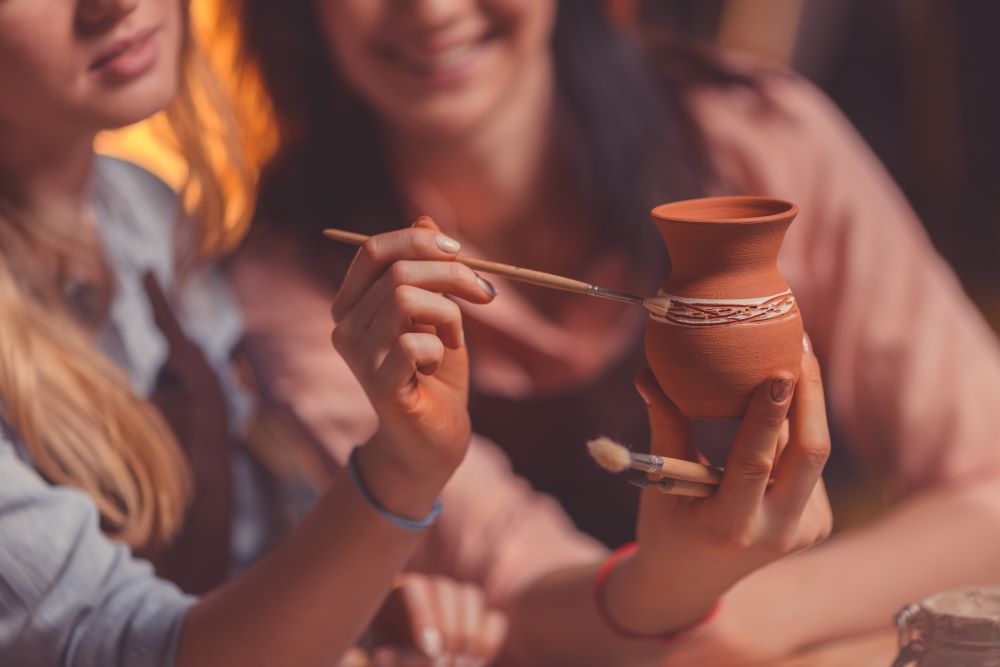
From Underglaze Decoration to Hardening and Glazing: Crafting Enduring Artistry
As we transition from the role of refractory materials in kiln protection to the intricate craft of pottery decoration, we encounter a significant part of the pottery making process. In the decoration and glazing stages, ceramics are imbued with individuality and artistic flair. This exploration delves into the integral role of skilled craftsmanship, precise temperature control, and specific techniques in creating intricately decorated and durable earthenware pieces. From underglaze decoration methods to the vital processes of glazing and hardening, we will examine how these steps seal and protect the artwork on the pottery, ensuring each piece is both beautiful and enduring, standing the test of time.
Underglaze Decoration and Hardening
After the bisque firing, some pieces are ready for underglaze decoration. This decoration, applied by hand, from a printed transfer, or directly printed from an engraving onto the ware, adds additional aesthetic appeal to the pottery. Following decoration, the pieces undergo a hardening process at temperatures between 650 to 700°C. This ensures the decoration is permanent and does not wear off during subsequent stages of production or use.
Glazing: The Final Touch of Brilliance
Post-decoration, both decorated and undecorated ware are coated with a thin layer of glaze - a slurry of glass-forming materials. As the water in the slurry dries away, it leaves a thin coating of powdered glaze on the surface of the pottery. This glazed ware is then fired again, this time to a temperature of approximately 1070°C. At this high temperature, the glaze melts and forms a smooth, glassy coating over the surface of the pottery. This enhances the visual appeal of the piece, and also makes it waterproof, more durable and easy to clean.
Overglaze Decoration: Gilding and Extra Touches for a Distinctive Finish
Once the glaze firing is completed, certain pottery pieces are selected for an additional round of decoration, imparting an extra layer of distinction and allure. This stage, referred to as overglaze decoration, involves meticulous application of designs either by hand or through printed transfers.
The application of gold adds a sophisticated touch to the pieces, epitomising the craft's finesse. Various techniques have been developed over time, each with its unique attributes.
Acid Gold
Acid Gold, an esteemed technique from the 1860s, involves etching the glaze with dilute hydrofluoric acid before applying gold. Reserved for high-end pottery, it demands unparalleled skill.
Liquid Gold
Liquid Gold, also known as Bright Gold, uses a solution of gold sulphoresinate and other metal resinates with a bismuth-based flux. The process yields a remarkably bright gold finish, necessitating minimal additional processing.
Burnish Gold
Burnish Gold technique employs a gold powder and oil mixture with a bismuth-based flux. This method yields a dull finish out of the kiln that requires burnishing to reveal its brilliant sheen.
These gilding methods allow potters to imbue ceramics with the timeless elegance of gold, marrying function and aesthetics in a captivating harmony.
These overglaze decorations are subsequently hardened at a temperature of about 700°C in an enamel firing, thereby ensuring their durability and permanence.
The colour palette available for overglaze decoration is typically more extensive than for underglaze decoration, as these colours only need to withstand temperatures up to 700°C. This allows for greater creative freedom in decoration, resulting in uniquely captivating pottery pieces that reflect the potter's vision and skill.
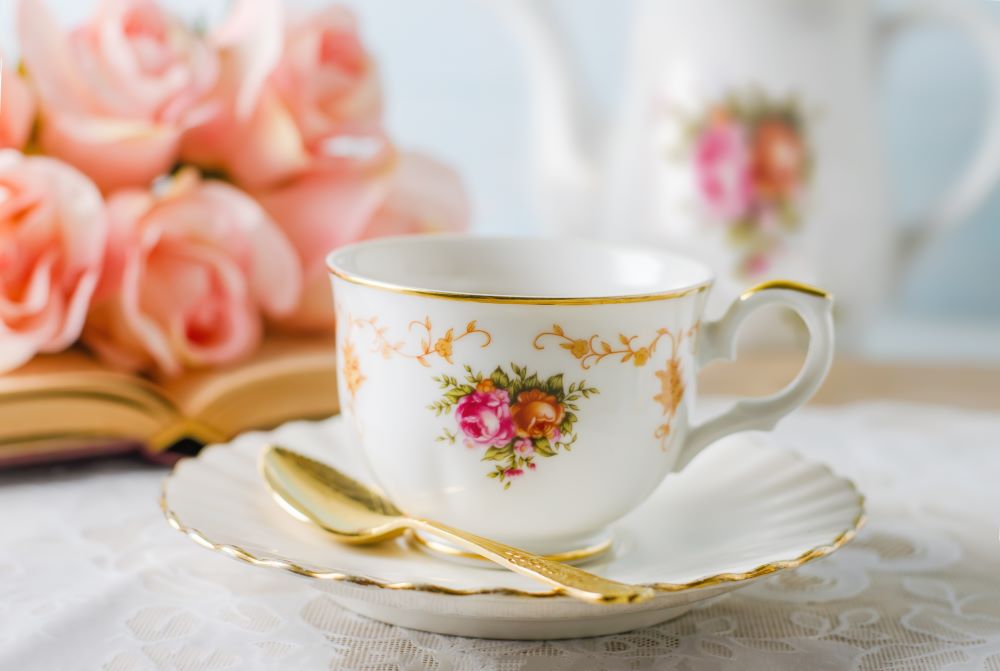
Conclusion: The Complex Harmony of Craft and Science
The journey of creating earthenware pottery is a complex harmony of craft and science. It's a process that requires not only creative vision and skilled hands, but also an intricate understanding of materials and firing techniques. From the selection of raw materials to the final firing, each step plays a crucial role in shaping the final piece. The result is a testament to the remarkable alchemy of human creativity, earth, and fire – a durable, beautiful piece of earthenware that carries forward the ancient tradition of pottery making.






